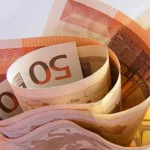A lecture on two decades of the life of Portugal in the Eurozone was held at the Croatian National Bank (HNB/CNB), and despite the many good things Portugal itself claims to have taken from the euro’s introduction, it isn’t entirely a bed of roses and there are lessons to be learned by Croatia.
As Ana Blaskovic/Poslovni Dnevnik writes on the 22nd of September, 2019, twenty years since the introduction of the euro, Portugal today regards the introduction of the common currency as very positive, said Banco Portugal’s governor, Carlos Da Silva Costa, at a lecture at the Croatian National Bank entitled “Two decades with the euro – a Portuguese perspective”. The benefits of the euro were particularly felt by the country during the financial crisis, which was more easily overcome by the availability of cheap money.
“The euro has promoted a shift towards a regime characterised by lower and less unpredictable interest rates, as well as inflation rates, and has led to important structural changes in the Portuguese economy,” said Governor Da Silva Costa.
For domestic skeptics concerned about rising prices over the euro, Portuguese experience shows that in the first quarter of 2002, the conversion of the old Portuguese escudo to the euro brought in 0.2 percentage points higher inflation and service prices raised by 0.5 points.
Since joining the exchange rate mechanism, Portugal has virtually halved long-term inflation, from an average of 11.7 down to 4.9 percent, and the economy quickly converged, reaching GDP per capita at 70 percent of the EU average back in 1998.
And now the classic “but” follows.
On the wings of an abundance of money and falling interest rates, real convergence hid the accumulation of macro imbalances, especially in the fiscal domain. Private sector borrowing exploded: from 1995 to 2007, savings halved and debt doubled to (on average) 187.2 percent of GDP. The Portuguese have long financed spending and low-profit investments, and cheap money has not been resisted by the state that pursued pro-cyclical fiscal policy.
The 2010 budget deficit exceeded 11 percent and public debt 100 percent of GDP. But with all that having been said, what is the situation today? The average treasury deficit (2015-2018) is -2.4 percent, public debt is 128.3 percent and private sector debt 216.3 percent of GDP. The economy grew only 2.2 percent in that period (growth potential only 1.2 percent worse than Croatia).
”For the last 25 years of history in Portugal, we’ve been taught that imbalances have caused excessive borrowing with weak growth potential. It also taught us that the combination of easy access to credit and insufficient quality institutions and policies has curtailed potential growth,” said the Portuguese governor.
He stated that Portugal’s examples and experiences are seriously worth Croatia’s consideration on its path to the euro, but the only question is whether or not the message will be heard and actually understood properly by the right people.
Make sure to follow our dedicated lifestyle and politics pages for much more.








